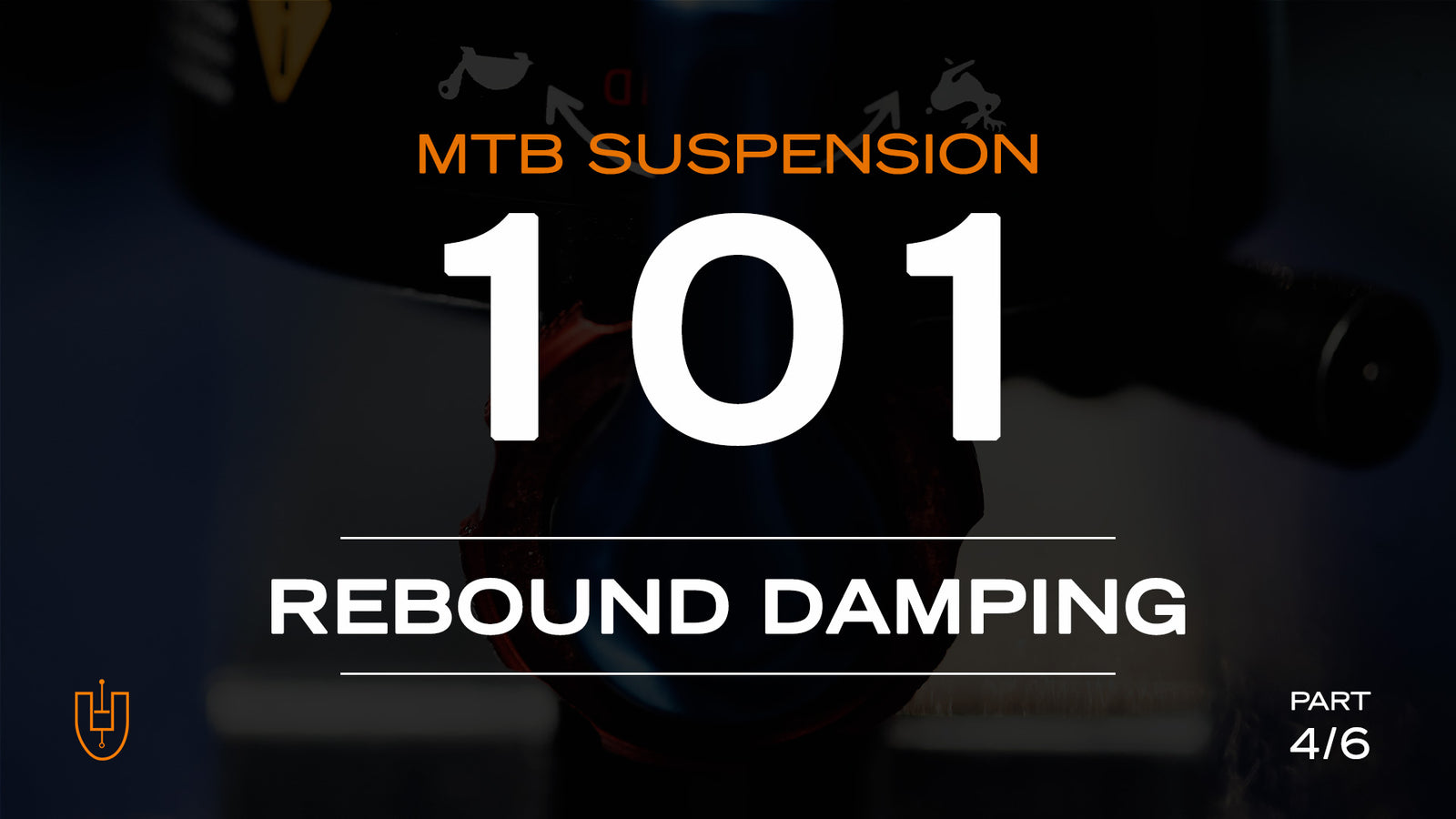MOUNTAIN BIKE SUSPENSION 101: Understanding Rebound Damping (Part 4 of 6)

What is rebound damping?
As mentioned previously, rebound is the opposite movement where the fork or shock extends from a compressed position towards its original position. The fork or shock can also extend past its sagged position whenever the wheel is unweighted - this allows it to track through holes and keep your wheel on the ground, among other things.
Rebound damping controls the rate of your suspension’s extension.
Unlike compression, the speed at which your suspension rebounds is heavily dependent on the force of the spring, which is dependent on the spring rate (or air pressure) and how far the spring has been compressed. A stiffer spring will rebound faster, therefore those who run stiffer (heavier) coil springs or higher air pressures will require more rebound damping in order to prevent the suspension from rebounding too violently. The end result should be about the same rate of extension in the same situations for light riders (and soft spring rates) as heavy riders and stiffer spring rates, but to keep those speeds consistent, stiffer springs need to face more resistance from the damper.

A fork or shock with very little rebound damping (holes toward fully open) will feel ‘pogo-sticky’ - and that speaks for itself. Rebound damping is a balance between allowing the wheel to move sufficiently freely, and keeping the bike from bouncing around too much.
A fork or shock with too much rebound damping (holes toward fully closed) can cause it to ‘pack down’. This is where it returns too slowly in response to the oncoming obstacles and successive hits, thus packing down. As it recedes farther and farther into its travel, it will often feel harsh. At the other end of the spectrum, if the rebound is too fast, you can feel like the bike kicks you around and lacks a planted, predictable feel. Some of the symptoms of excessively slow rebound (harshness) can also be symptoms of excessively fast rebound.
Rebound should usually be adjusted one or two clicks at a time. If you find yourself going from one extreme end of the spectrum to the other, that's much too big of a change, and both settings are likely to be poor. Take notes of your settings so you can go back to a previous setup if you preferred it, then make small changes, using only one adjuster at a time, in increments of one or two clicks.
Next:

